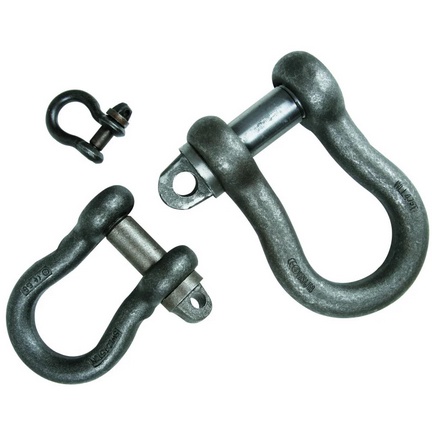Introduction:
In the intricate dance of heavy lifting, the synergy between lifting slings and shackles plays a pivotal role in ensuring both efficiency and safety. This article explores the symbiotic relationship between lifting slings and shackles, delving into their respective functionalities, applications, and the collective impact they have on optimizing lifting operations.
Understanding Lifting Slings:
Lifting slings are integral components in material handling, providing a flexible and secure means of lifting and moving heavy loads. They come in various materials, including nylon, polyester, wire rope, and chain, each tailored to specific lifting requirements. The versatility of lifting slings lies in their ability to conform to the shape of the load, distributing the weight evenly and minimizing stress on the material being lifted.
Types of Lifting Slings:
-
Nylon Slings: Nylon slings are known for their strength, flexibility, and resistance to abrasion. They are suitable for a wide range of lifting applications and are particularly effective when loads require careful handling.
-
Polyester Slings: Polyester slings are prized for their low stretch properties and high resistance to ultraviolet (UV) rays. They are ideal for outdoor applications and are commonly used in construction and maritime industries.
-
Wire Rope Slings: Wire rope slings consist of strands of wire wound together, providing exceptional strength and durability. They are well-suited for heavy-duty lifting operations and are often used in construction and manufacturing.
-
Chain Slings: Chain slings, constructed from alloy steel chains, are renowned for their durability and resistance to high-temperature environments. They are commonly employed in industrial settings where robust lifting solutions are required.
Understanding Shackles:
Shackles are the linchpin in the lifting process, serving as the critical link between lifting slings and the load. While shackles come in various forms, including anchor shackles, chain shackles, and swivel shackles, their fundamental purpose remains consistent—to secure the lifting slings and ensure a safe and reliable connection to the load.
Types of Shackles:
-
Anchor Shackles: Anchor shackles, also known as bow shackles, feature a larger, rounded shape that accommodates the attachment of multiple slings. Their design allows for multi-dimensional loading, making them versatile in various lifting scenarios.
-
Chain Shackles: Chain shackles, as the name suggests, are designed specifically for use with chain slings. They offer a robust and secure connection, making them suitable for heavy-duty lifting applications.
-
Swivel Shackles: Swivel shackles introduce an additional layer of flexibility by allowing rotation during lifting. This rotational capability minimizes side loading, enhances load alignment, and contributes to a safer lifting operation.
Maximizing Efficiency:
-
Load Distribution: Lifting slings, with their ability to conform to the shape of the load, ensure even weight distribution. This is crucial in preventing stress concentrations on specific points, reducing the risk of damage to the load and enhancing overall safety.
-
Versatility: The diverse range of lifting slings caters to the specific needs of different industries and lifting scenarios. Whether it's the flexibility of nylon slings, the durability of wire rope slings, or the resilience of chain slings, there is a sling type for every application.
-
Secure Connection: Shackles play a vital role in creating a secure connection between lifting slings and the load. The choice of the appropriate shackle type, such as anchor shackles for versatile use or chain shackles for heavy-duty applications, ensures a reliable link in the lifting chain.
-
Flexibility with Swivel Shackles: The incorporation of swivel shackles introduces a dynamic element to lifting operations. By allowing rotation during lifting, swivel shackles mitigate side loading issues, optimize load alignment, and contribute to a more efficient and controlled lifting process.
Conclusion:
In the intricate web of lifting operations, the marriage of lifting slings and shackles emerges as a dynamic and efficient partnership. The versatility of lifting slings, coupled with the secure connection provided by shackles, forms the backbone of safe and effective material handling. As industries continue to prioritize efficiency and safety in their lifting processes, the understanding and strategic deployment of lifting slings and shackles will remain paramount. By hitching, hoisting, and hauling with precision, the lifting industry can achieve new heights of productivity while ensuring the well-being of both personnel and equipment.
Benefits of Lifting Slings and Shackles:
-
Enhanced Safety: The combination of lifting slings and shackles ensures a secure and reliable lifting process, minimizing the risk of accidents and equipment failure.
-
Efficiency Optimization: The flexibility of lifting slings, coupled with the secure connection provided by shackles, contributes to the optimization of lifting operations, improving overall efficiency.
-
Load Protection: Lifting slings distribute the load evenly, preventing stress concentrations and potential damage to the material being lifted.
-
Versatility: The diverse range of lifting slings and shackles caters to the specific needs of different industries and lifting scenarios, offering versatile solutions for various applications.


No comments yet